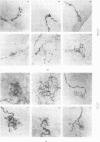Abstract
Chronic congestive heart failure (CHF) was induced in dogs by the construction of an aorto-caval fistula below the level of the renal arteries. Aorto-caval fistula dogs showed signs of CHF which included ascites, hind limb edema, and pulmonary congestion. Ventricular catheterization indicated a significantly higher left ventricular end diastolic pressure and lower maximum velocity of left ventricular pressure development/left ventricular end diastolic pressure in CHF dogs when compared to sham-operated controls. Heart weight/body weight ratios were significantly higher in CHF dogs. Electrophysiological recordings from medullated left atrial type B receptors from the cervical vagus indicated a depressed sensitivity of these receptors in CHF dogs when compared to sham-operated control dogs. For any given change in left atrial pressure, the discharge of left atrial receptors was significantly reduced in CHF dogs compared with sham-operated controls. The mechanism for this depressed sensitivity was investigated. Sonomicrometry of the left atrial appendage indicated a decreased compliance of the left atrial appendage in the dogs with chronic CHF. In addition, microscope examination of the complex unencapsulated receptor endings taken from the left atrial endocardium indicated a marked alteration in receptor morphology. A loss of the end arborization was the most typical finding. It is concluded that chronic CHF brought about by an aorto-caval fistula results in a depressed left atrial stretch receptor response and that both decreased left atrial compliance and structural alterations in the receptor endings may account for this depressed sensitivity.
Full text
PDF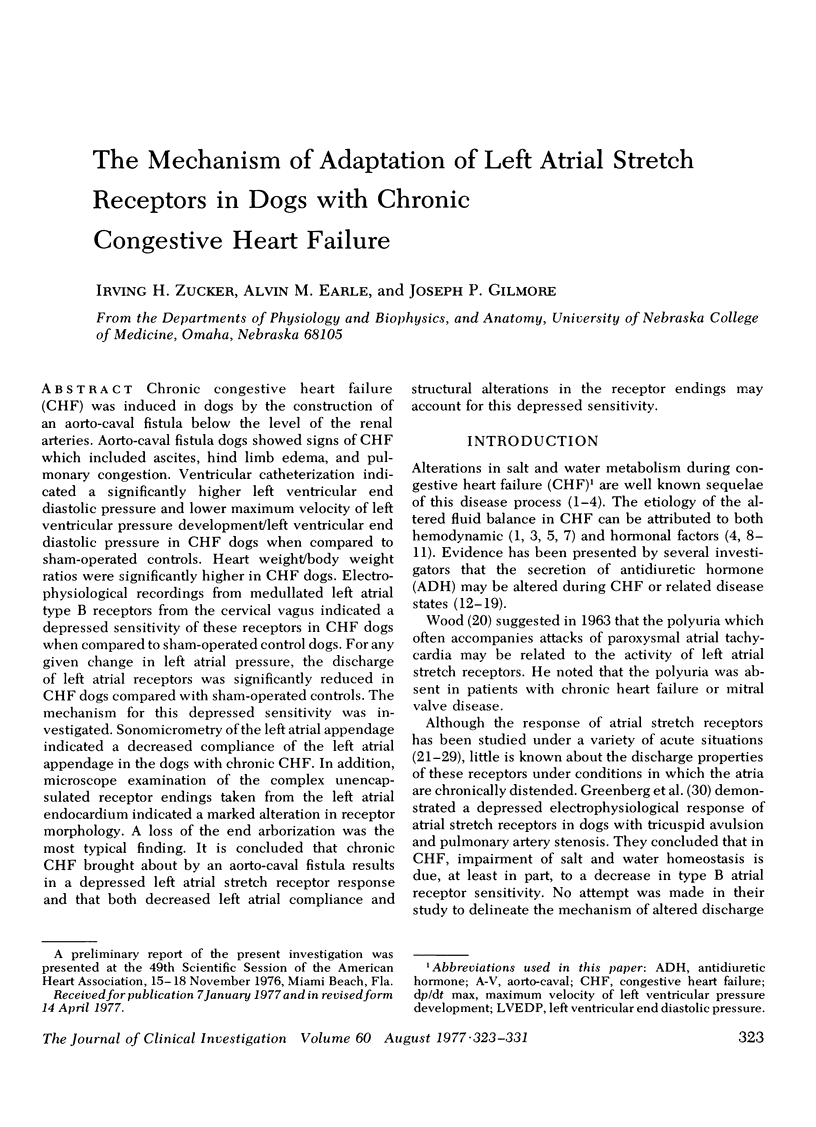
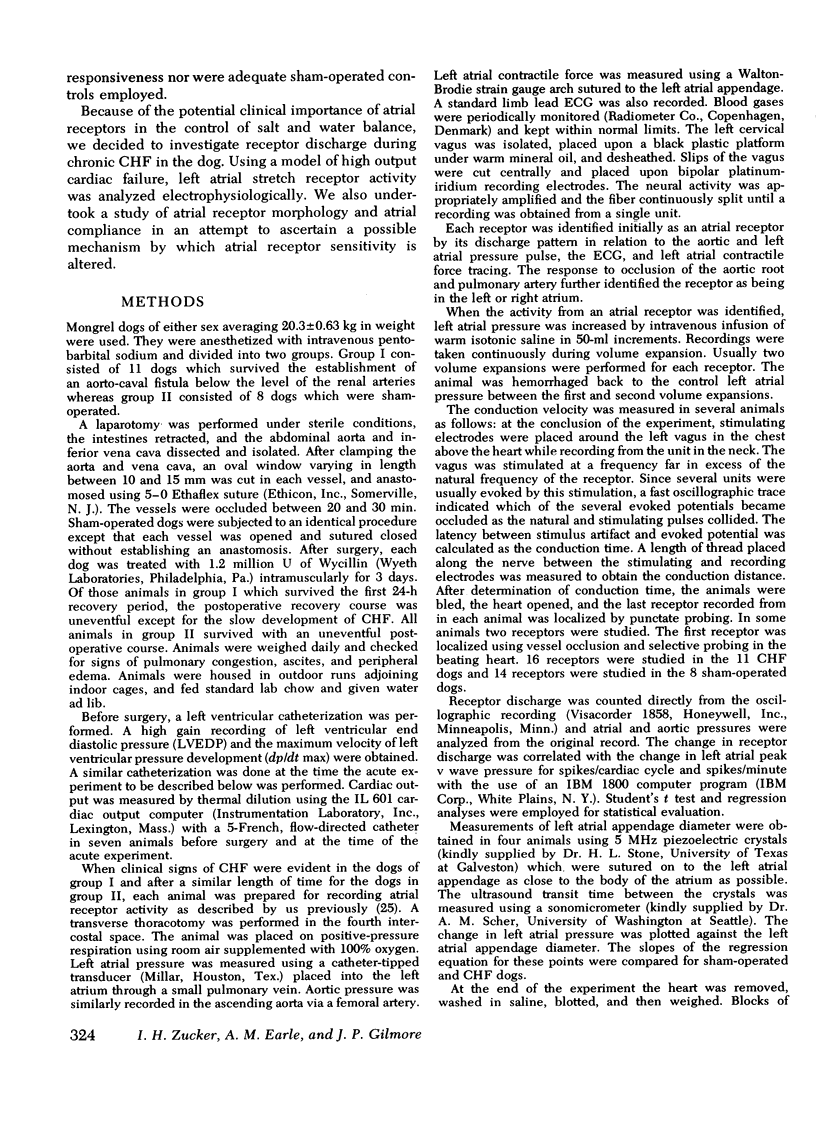
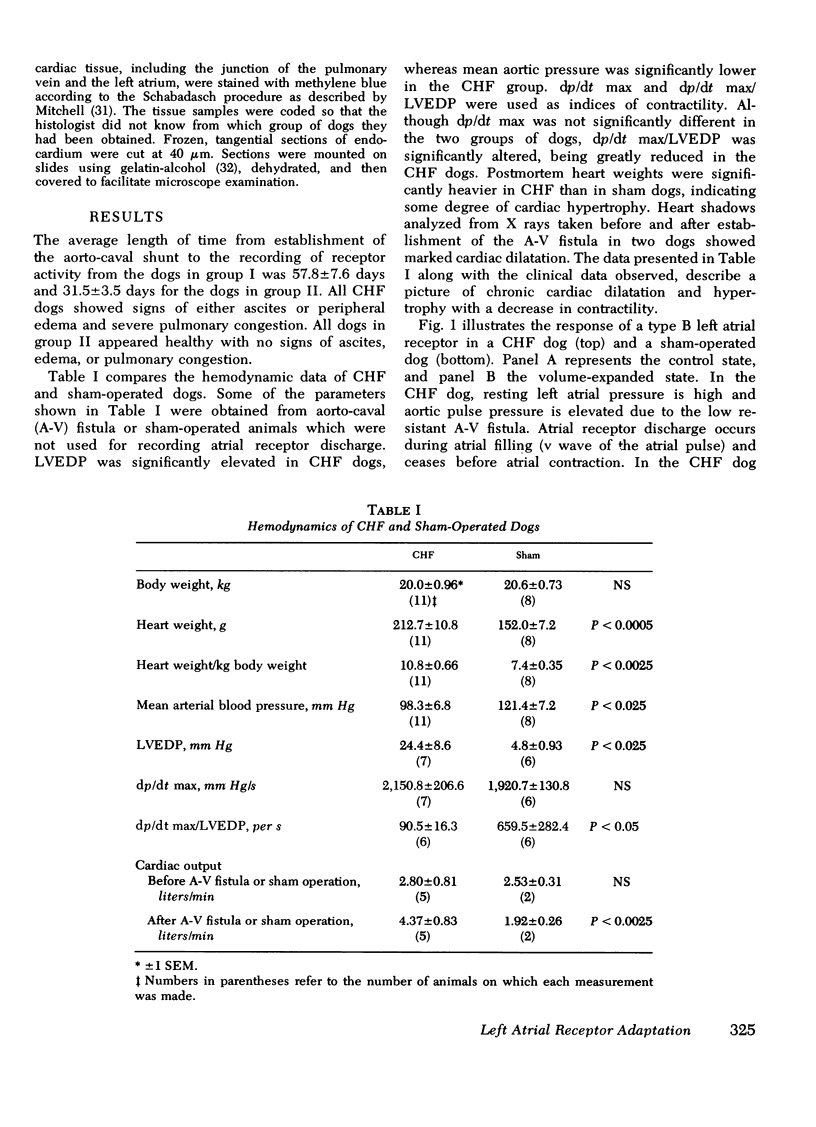
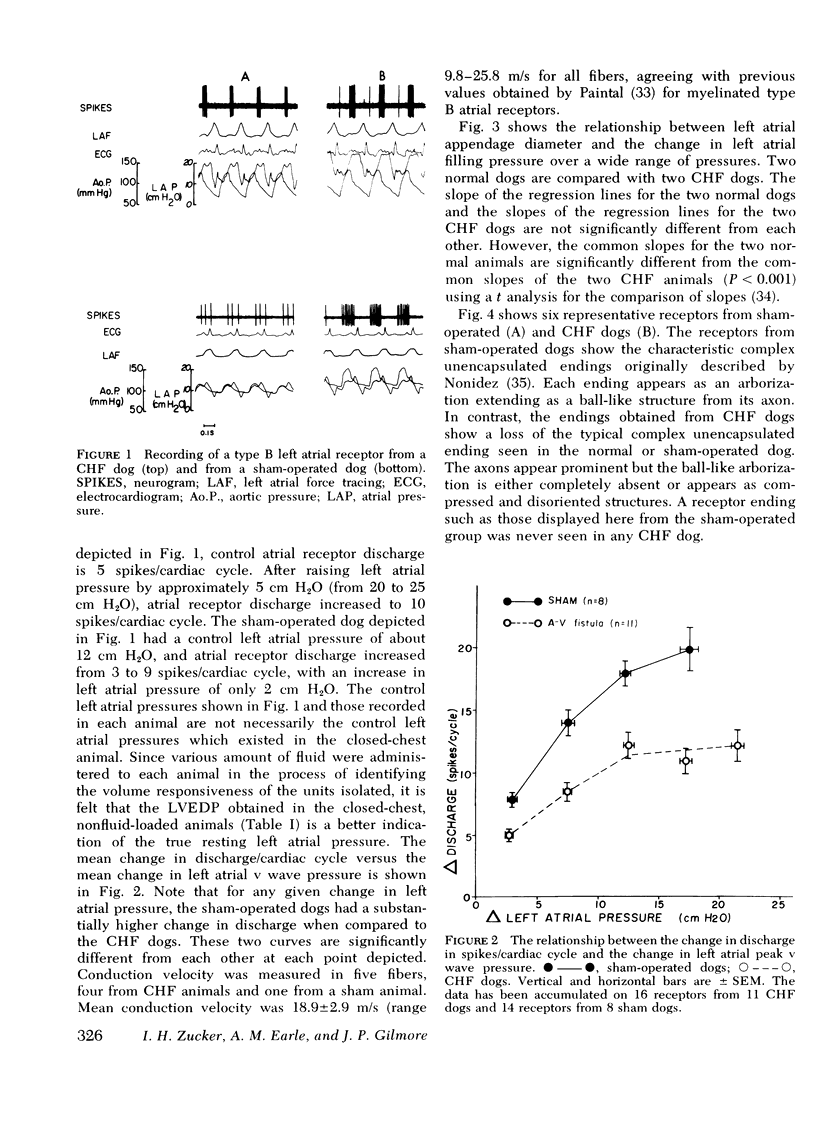
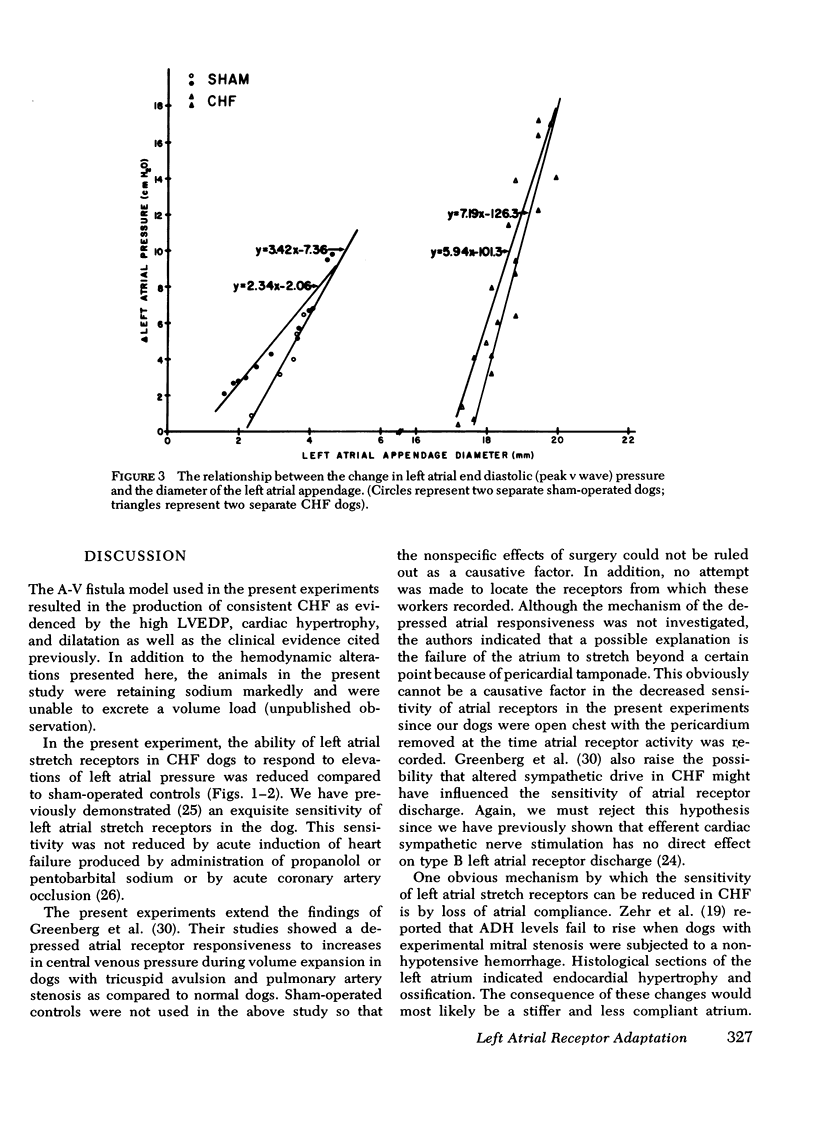
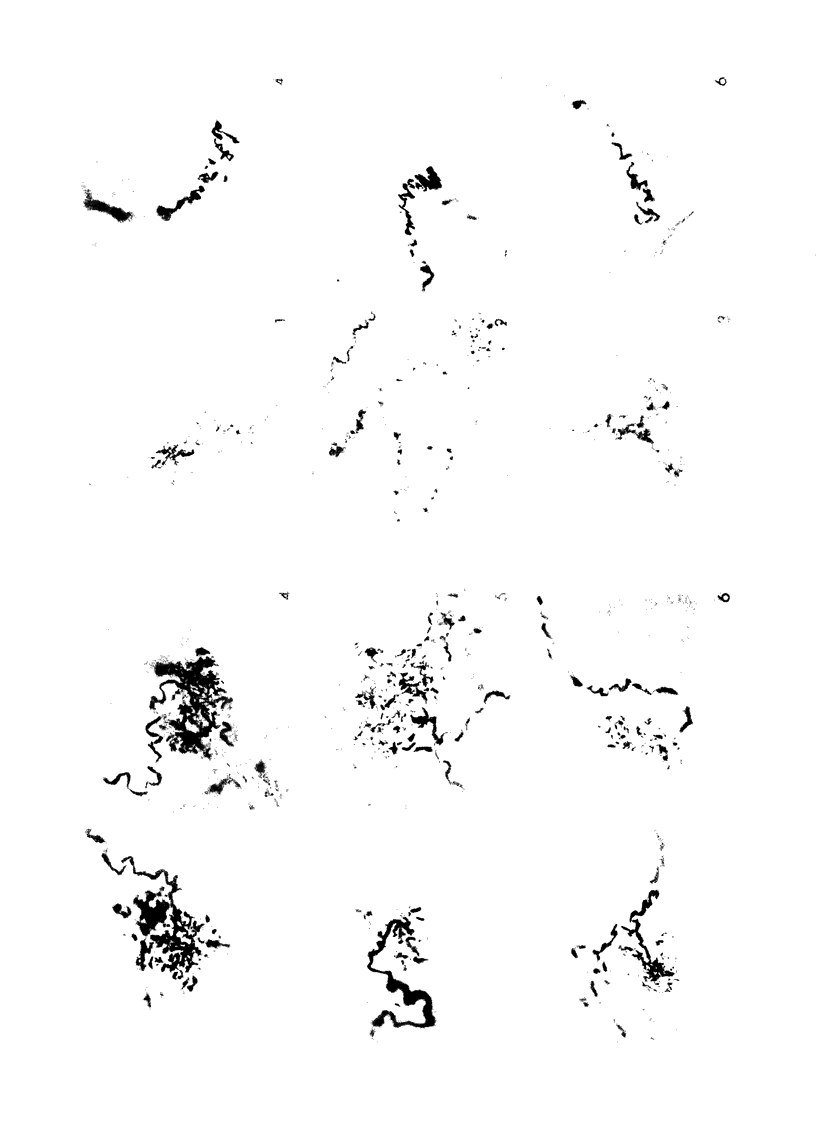
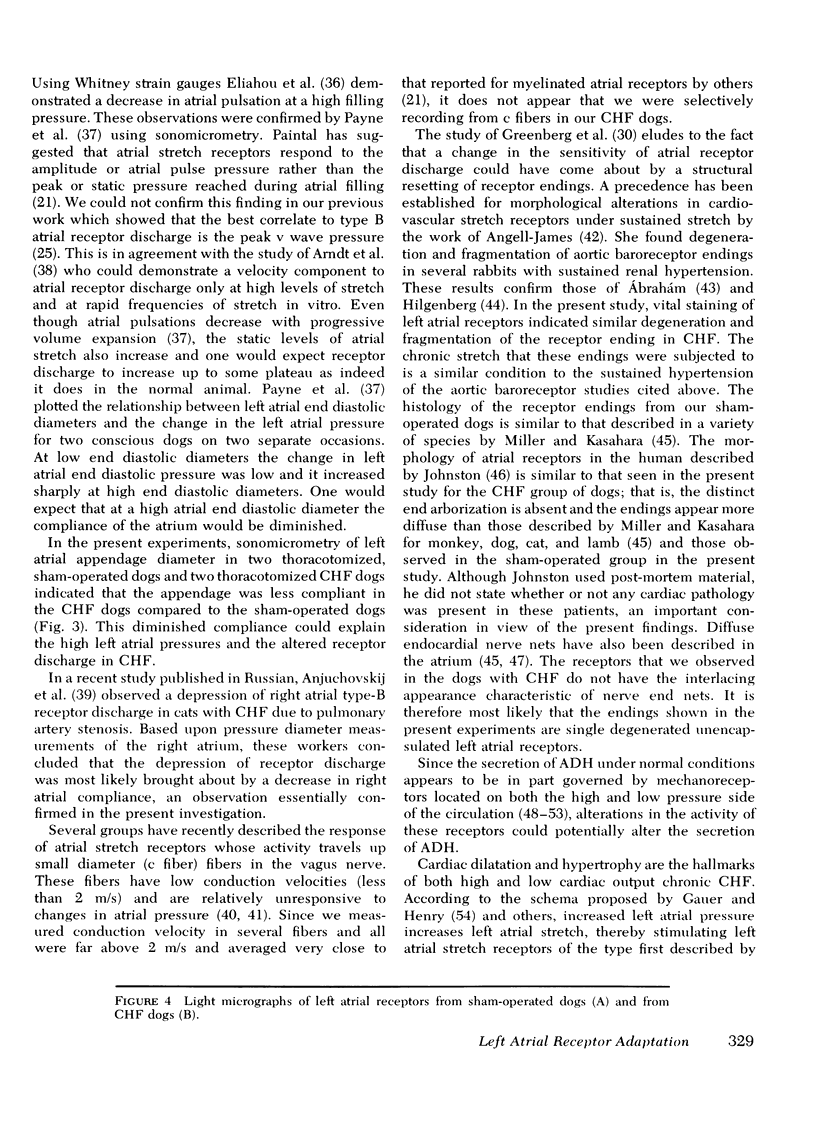
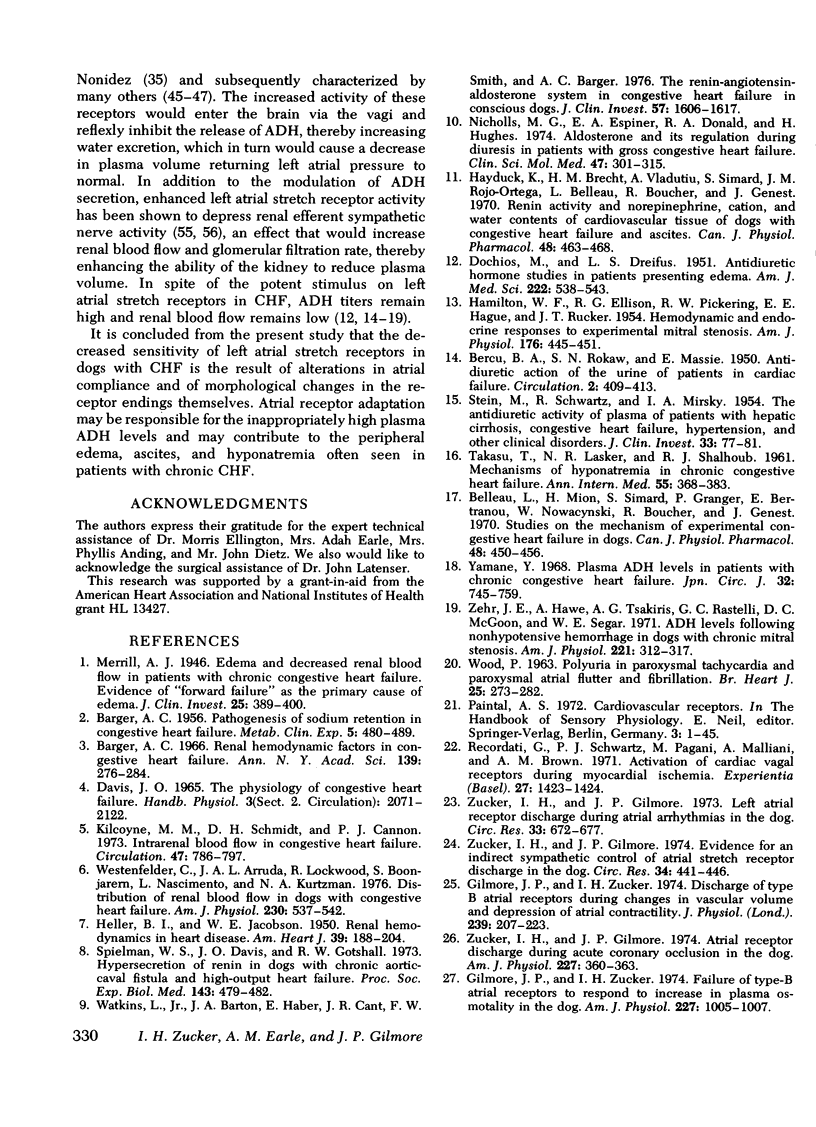
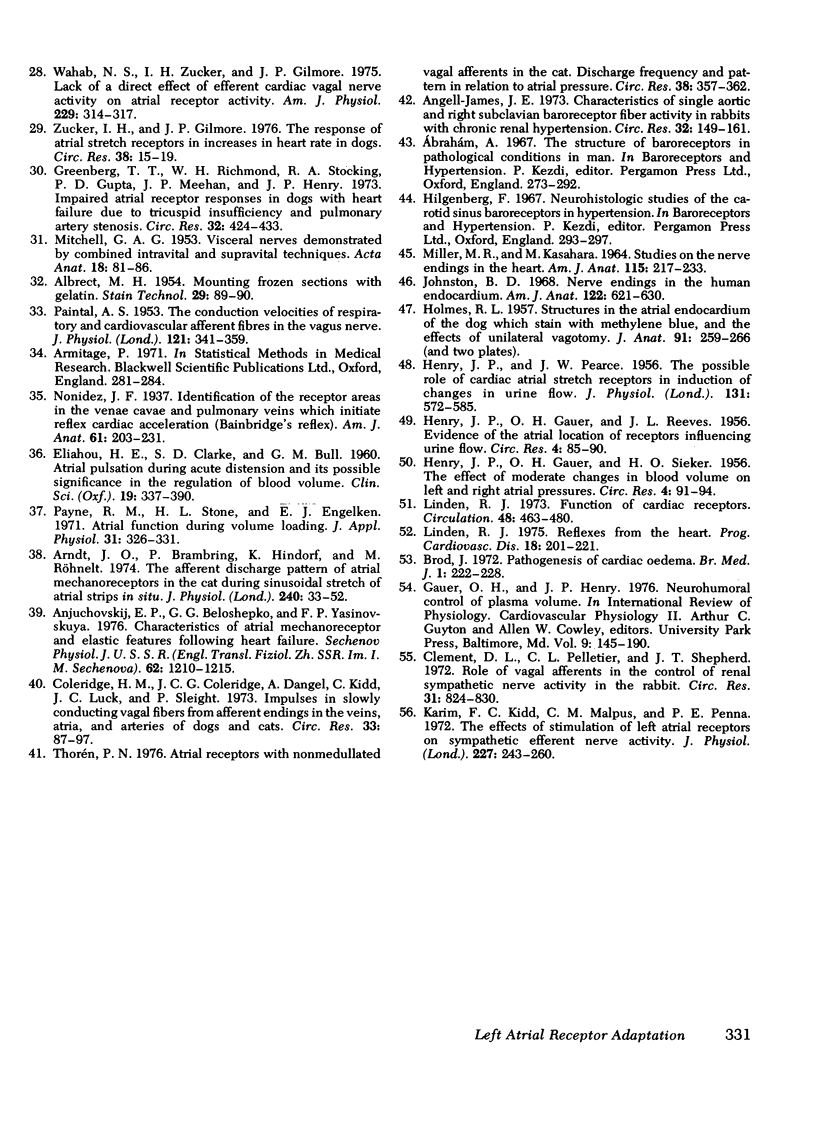
Images in this article
Selected References
These references are in PubMed. This may not be the complete list of references from this article.
- ALBRECHT M. H. Mounting frozen sections with gelatin. Stain Technol. 1954 Mar;29(2):89–90. doi: 10.3109/10520295409115447. [DOI] [PubMed] [Google Scholar]
- Angell-James J. E. Characteristics of single aortic and right subclavian baroreceptor fiber activity in rabbits with chronic renal hypertension. Circ Res. 1973 Feb;32(2):149–161. doi: 10.1161/01.res.32.2.149. [DOI] [PubMed] [Google Scholar]
- Arndt J. O., Brambring P., Hindorf K., Röhnelt M. The afferent discharge pattern of atrial mechanoreceptors in the cat during sinusoidal stretch of atrial strips in situ. J Physiol. 1974 Jul;240(1):33–52. doi: 10.1113/jphysiol.1974.sp010597. [DOI] [PMC free article] [PubMed] [Google Scholar]
- BARGER A. C. The pathogenesis of sodium retention in congestive heart failure. Metabolism. 1956 Jul;5(4):480–489. [PubMed] [Google Scholar]
- BERCU B. A., ROKAW S. N., MASSIE E. Antidiuretic action of the urine of patients in cardiac failure. Circulation. 1950 Sep;2(3):409–413. doi: 10.1161/01.cir.2.3.409. [DOI] [PubMed] [Google Scholar]
- Barger A. C. Renal hemodynamic factors in congestive heart failure. Ann N Y Acad Sci. 1966 Nov 22;139(2):276–284. doi: 10.1111/j.1749-6632.1966.tb41202.x. [DOI] [PubMed] [Google Scholar]
- Belleau L., Mion H., Simard S., Granger P., Bertranou E., Nowaczynski W., Boucher R., Genest J. Studies on the mechanism of experimental congestive heart failure in dogs. Can J Physiol Pharmacol. 1970 Jul;48(7):450–456. doi: 10.1139/y70-069. [DOI] [PubMed] [Google Scholar]
- Brod J. Pathogenesis of cardiac oedema. Br Med J. 1972 Jan 22;1(5794):222–228. doi: 10.1136/bmj.1.5794.222. [DOI] [PMC free article] [PubMed] [Google Scholar]
- Clement D. L., Pelletier C. L., Shepherd J. T. Role of vagal afferents in the control of renal sympathetic nerve activity in the rabbit. Circ Res. 1972 Dec;31(6):824–830. doi: 10.1161/01.res.31.6.824. [DOI] [PubMed] [Google Scholar]
- Coleridge H. M., Coleridge J. C., Dangel A., Kidd C., Luck J. C., Sleight P. Impulses in slowly conducting vagal fibers from afferent endings in the veins, atria, and arteries of dogs and cats. Circ Res. 1973 Jul;33(1):87–97. doi: 10.1161/01.res.33.1.87. [DOI] [PubMed] [Google Scholar]
- DOCHIOS M., DREIFUS L. S. Antidiuretic hormone studies in patients presenting edema. Am J Med Sci. 1951 Nov;222(5):538–543. doi: 10.1097/00000441-195111000-00009. [DOI] [PubMed] [Google Scholar]
- ELIAHOU H. E., CLARKE S. D., BULL G. M. Atrial pulsation during acute distension and its possible significance in the regulation of blood volume. Clin Sci. 1960 Aug;19:377–390. [PubMed] [Google Scholar]
- Gilmore J. P., Zucker I. H. Discharge of type B atrial receptors during changes in vascular volume and depression of atrial contractility. J Physiol. 1974 Jun;239(2):207–223. doi: 10.1113/jphysiol.1974.sp010564. [DOI] [PMC free article] [PubMed] [Google Scholar]
- Gilmore J. P., Zucker I. H. Failure of the type-B atrial receptors to respond to increase in plasma osmolality in the dog. Am J Physiol. 1974 Nov;227(5):1005–1007. doi: 10.1152/ajplegacy.1974.227.5.1005. [DOI] [PubMed] [Google Scholar]
- Greenberg T. T., Richmond W. H., Stocking R. A., Gupta P. D., Meehan J. P., Henry J. P. Impaired atrial receptor responses in dogs with heart failure due to tricuspid insufficiency and pulmonary artery stenosis. Circ Res. 1973 Apr;32(4):424–433. doi: 10.1161/01.res.32.4.424. [DOI] [PubMed] [Google Scholar]
- HAMILTON W. F., ELLISON R. G., PICKERING R. W., HAGUE E. E., RUCKER J. T. Hemodynamic and endocrine responses to experimental mitral stenosis. Am J Physiol. 1954 Mar;176(3):445–451. doi: 10.1152/ajplegacy.1954.176.3.445. [DOI] [PubMed] [Google Scholar]
- HELLER B. I., JACOBSON W. E. Renal hemodynamics in heart disease. Am Heart J. 1950 Feb;39(2):188–204. doi: 10.1016/0002-8703(50)90216-x. [DOI] [PubMed] [Google Scholar]
- HENRY J. P., GAUER O. H., REEVES J. L. Evidence of the atrial location of receptors influencing urine flow. Circ Res. 1956 Jan;4(1):85–90. doi: 10.1161/01.res.4.1.85. [DOI] [PubMed] [Google Scholar]
- HENRY J. P., GAUER O. H., SIEKER H. O. The effect of moderate changes in blood volume on left and right atrial pressures. Circ Res. 1956 Jan;4(1):91–94. doi: 10.1161/01.res.4.1.91. [DOI] [PubMed] [Google Scholar]
- HENRY J. P., PEARCE J. W. The possible role of cardiac atrial stretch receptors in the induction of changes in urine flow. J Physiol. 1956 Mar 28;131(3):572–585. doi: 10.1113/jphysiol.1956.sp005483. [DOI] [PMC free article] [PubMed] [Google Scholar]
- HOLMES R. L. Structures in the atrial endocardium of the dog which stain with methylene blue, and the effects of unilateral vagotomy. J Anat. 1957 Apr;91(2):259–266. [PMC free article] [PubMed] [Google Scholar]
- Hayduk K., Brecht H. M., Vladutiu A., Simard S., Rojo-Ortega J. M., Belleau L., Boucher R., Genest J. Renin activity and norepinephrine, cation, and water contents of cardiovascular tissue of dogs with congestive heart failure, and ascites. Can J Physiol Pharmacol. 1970 Jul;48(7):463–468. doi: 10.1139/y70-071. [DOI] [PubMed] [Google Scholar]
- Johnston B. D. Nerve endings in the human endocardium. Am J Anat. 1968 May;122(3):621–629. doi: 10.1002/aja.1001220312. [DOI] [PubMed] [Google Scholar]
- Karim F., Kidd C., Malpus C. M., Penna P. E. The effects of stimulation of the left atrial receptors on sympathetic efferent nerve activity. J Physiol. 1972 Dec;227(1):243–260. doi: 10.1113/jphysiol.1972.sp010030. [DOI] [PMC free article] [PubMed] [Google Scholar]
- Kilcoyne M. M., Schmidt D. H., Cannon P. J. Intrarenal blood flow in congestive heart failure. Circulation. 1973 Apr;47(4):786–797. doi: 10.1161/01.cir.47.4.786. [DOI] [PubMed] [Google Scholar]
- Liden R. J. Reflexes from the heart. Prog Cardiovasc Dis. 1975 Nov-Dec;18(3):201–221. doi: 10.1016/0033-0620(75)90011-0. [DOI] [PubMed] [Google Scholar]
- Linden R. J. Function of cardiac receptors. Circulation. 1973 Sep;48(3):463–480. doi: 10.1161/01.cir.48.3.463. [DOI] [PubMed] [Google Scholar]
- MILLER M. R., KASAHARA M. STUDIES ON THE NERVE ENDINGS IN THE HEART. Am J Anat. 1964 Sep;115:217–233. doi: 10.1002/aja.1001150203. [DOI] [PubMed] [Google Scholar]
- MITCHELL G. A. [Visceral nerves demonstrated by combined intravital and supravital techniques]. Acta Anat (Basel) 1953;18(2):81–86. doi: 10.1159/000140828. [DOI] [PubMed] [Google Scholar]
- Merrill A. J. EDEMA AND DECREASED RENAL BLOOD FLOW IN PATIENTS WITH CHRONIC CONGESTIVE HEART FAILURE: EVIDENCE OF "FORWARD FAILURE" AS THE PRIMARY CAUSE OF EDEMA. J Clin Invest. 1946 May;25(3):389–400. doi: 10.1172/JCI101720. [DOI] [PMC free article] [PubMed] [Google Scholar]
- Nicholls M. G., Espiner E. A., Donald R. A., Hughes H. Aldosterone and its regulation during diuresis in patients with gross congestive heart failure. Clin Sci Mol Med. 1974 Oct;47(4):301–315. doi: 10.1042/cs0470301. [DOI] [PubMed] [Google Scholar]
- PAINTAL A. S. The conduction velocities of respiratory and cardiovascular afferent fibres in the vagus nerve. J Physiol. 1953 Aug;121(2):341–359. doi: 10.1113/jphysiol.1953.sp004950. [DOI] [PMC free article] [PubMed] [Google Scholar]
- Payne R. M., Stone H. L., Engelken E. J. Atrial function during volume loading. J Appl Physiol. 1971 Sep;31(3):326–331. doi: 10.1152/jappl.1971.31.3.326. [DOI] [PubMed] [Google Scholar]
- Recordati G., Schwartz P. J., Pagani M., Malliani A., Brown A. M. Activation of cardiac vagal receptors during myocardial ischemia. Experientia. 1971 Dec 15;27(12):1423–1424. doi: 10.1007/BF02154267. [DOI] [PubMed] [Google Scholar]
- STEIN M., SCHWARTZ R., MIRSKY I. A. The antidiuretic activity of plasma of patients with hepatic cirrhosis, congestive heart failure, hypertension and other clinical disorders. J Clin Invest. 1954 Jan;33(1):77–81. doi: 10.1172/JCI102873. [DOI] [PMC free article] [PubMed] [Google Scholar]
- Spielman W. S., Davis J. O., Gotshall R. W. Hypersecretion of renin in dogs with a chronic aortic-caval fistula and high-output heart failure. Proc Soc Exp Biol Med. 1973 Jun;143(2):479–482. doi: 10.3181/00379727-143-37347. [DOI] [PubMed] [Google Scholar]
- TAKASU T., LASKER N., SHALHOUB R. J. Mechanisms of hyponatremia in chronic congestive heart failure. Ann Intern Med. 1961 Sep;55:368–383. doi: 10.7326/0003-4819-55-3-368. [DOI] [PubMed] [Google Scholar]
- Thorén P. N. Atrial receptors with nonmedullated vagal afferents in the cat. Discharge frequency and pattern in relation to atrial pressure. Circ Res. 1976 May;38(5):357–362. doi: 10.1161/01.res.38.5.357. [DOI] [PubMed] [Google Scholar]
- WOOD P. Polyuria in paroxysmal tachycardia and paroxysmal atrial flutter and fibrillation. Br Heart J. 1963 May;25:273–282. doi: 10.1136/hrt.25.3.273. [DOI] [PMC free article] [PubMed] [Google Scholar]
- Wahab N. S., Zucker I. H., Gilmore J. P. Lack of a direct effect of efferent cardiac vagal nerve activity on atrial receptor activity. Am J Physiol. 1975 Aug;229(2):314–317. doi: 10.1152/ajplegacy.1975.229.2.314. [DOI] [PubMed] [Google Scholar]
- Watkins L., Jr, Burton J. A., Haber E., Cant J. R., Smith F. W., Barger A. C. The renin-angiotensin-aldosterone system in congestive failure in conscious dogs. J Clin Invest. 1976 Jun;57(6):1606–1617. doi: 10.1172/JCI108431. [DOI] [PMC free article] [PubMed] [Google Scholar]
- Westenfelder C., Arruda J. A., Lockwood R., Boonjarern S., Nascimento L., Kurtzman N. A. Distribution of renal blood flow in dogs with congestive heart failure. Am J Physiol. 1976 Feb;230(2):537–542. doi: 10.1152/ajplegacy.1976.230.2.537. [DOI] [PubMed] [Google Scholar]
- Yamane Y. Plasma ADH level in patients with chronic congestive heart failure. Jpn Circ J. 1968 May;32(5):745–759. doi: 10.1253/jcj.32.745. [DOI] [PubMed] [Google Scholar]
- Zehr J. E., Hawe A., Tsakiris A. G., Rastelli G. C., McGoon D. C., Segar W. E. ADH levels following nonhypotensive hemorrhage in dogs with chronic mitral stenosis. Am J Physiol. 1971 Jul;221(1):312–317. doi: 10.1152/ajplegacy.1971.221.1.312. [DOI] [PubMed] [Google Scholar]
- Zucker I. H., Gilmore J. P. Atrial receptor discharge during acute coronary occlusion in the dog. Am J Physiol. 1974 Aug;227(2):360–363. doi: 10.1152/ajplegacy.1974.227.2.360. [DOI] [PubMed] [Google Scholar]
- Zucker I. H., Gilmore J. P. Evidence for an indirect sympathetic control of atrial stretch receptor discharge in the dog. Circ Res. 1974 Apr;34(4):441–446. doi: 10.1161/01.res.34.4.441. [DOI] [PubMed] [Google Scholar]
- Zucker I. H., Gilmore J. P. Left atrial receptor discharge during atrial arrhythmias in the dog. Circ Res. 1973 Dec;33(6):672–677. doi: 10.1161/01.res.33.6.672. [DOI] [PubMed] [Google Scholar]
- Zucker I. H., Gilmore J. P. The response of atrial stretch receptors to increases in heart rate in dogs. Circ Res. 1976 Jan;38(1):15–19. doi: 10.1161/01.res.38.1.15. [DOI] [PubMed] [Google Scholar]



